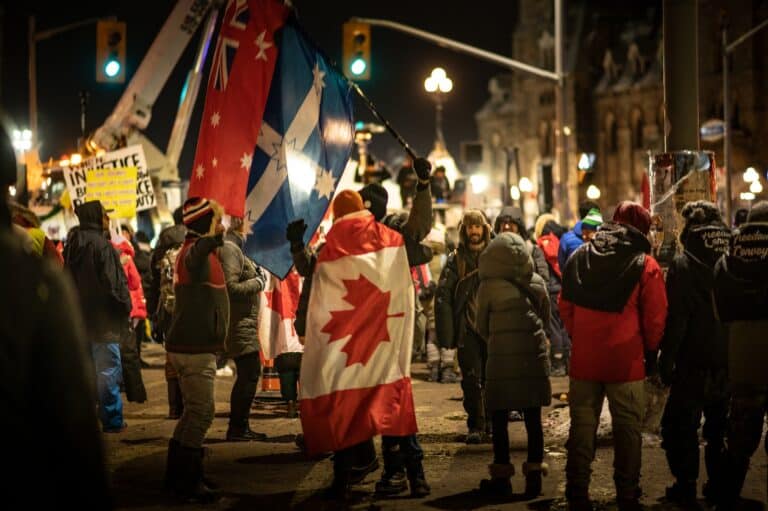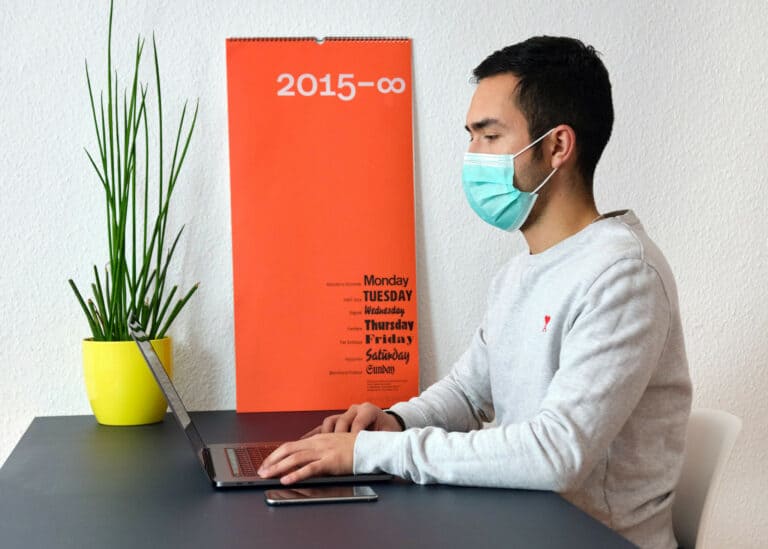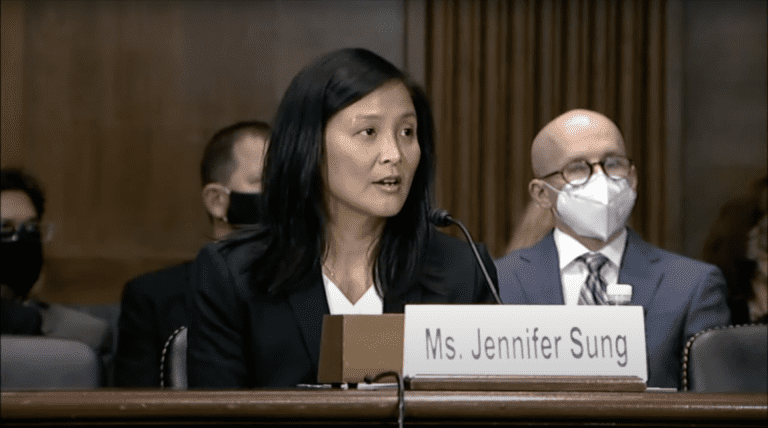Jane Flanagan is a Leadership in Government Fellow with the Open Society Foundations and a Visiting Scholar at IIT Chicago-Kent College of Law.
Laura Padin is a senior staff attorney at the National Employment Law Project.
In the midst of the COVID-19 crisis, some of our most essential workers are temp workers. The warehouse workers who fulfill and package online orders often don’t work for Amazon but for temporary staffing agencies that contract with Amazon. The nurses brought in to alleviate dire staffing shortages at hospitals are likely not hired directly by the hospital but by temporary nurse staffing agencies. Those extra workers engaged to deliver packages? They’re likely temps too.
Temporary staffing agencies differ from employment agencies or headhunters in that they place temp workers with a worksite employer but continue to act as the employer of record after that placement. This relationship creates perverse incentives for both temp agencies and worksite employers while exacerbating the vulnerabilities facing temp workers that—as with so many vulnerabilities—have been vividly highlighted by the current COVID-19 crisis. From higher risks of infection to challenges accessing benefits, essential temp workers are in a particularly precarious situation that requires attention from workers’ advocates and policy makers.
Even in normal times, temp workers experience higher rates of workplace injuries than permanent employees. Because staffing agencies, not host employers, are generally responsible for temp workers’ compensation claims, host employers may assign temps to more dangerous jobs or skimp on safety and health training that permanent employees receive when performing the same tasks. These disproportionate occupational safety risks have persisted in the COVID-19 crisis as temp workers pour into essential workplaces without any enforceable COVID-19-specific requirements from the federal Occupational Safety and Health Administration (OSHA) on what practices or policies employers must implement to protect workers. From the temp warehouse workers in Illinois who are petitioning the governor for help because they are working in crowded shoulder-to-shoulder conditions, to the Facebook temp workers required to work on-site while their colleagues work remotely from home, temp workers face higher risks of infection with little-to-no protection.
The threat of retaliation for speaking out about workplace safety concerns is also higher for temps. A relatively common practice in the industry is for host employers to write “DNR”—short for “Do Not Return”—on the back of a temporary worker’s work slip at the end of the day, which instructs the temporary staffing agency not to assign the worker to the jobsite again. Temp workers who complain about any aspect of an assignment face being “DNR’d.” As such, temp workers should raise workplace concerns in a concerted manner so that they invoke Section 7 of the NLRA and have some protection against retaliation.
Temp workers experience significant wage and benefit penalties as compared to permanent employees that also make it more likely that they will have no choice but to continue to work while feeling sick or caring for someone who is sick. Only around 1 in 10 temp staffing workers (12.8%) receive any type of employer-provided health benefit, compared to 5 in 10 workers in standard arrangements (53.4%). The recently-enacted federal Families First Coronavirus Response Act (FFCRA), requires some employers to provide their workers with paid family and medical leave for COVID-19-related reasons, but exempts employers with more than 500 employees. Since a majority of temps work for large staffing agencies, this effectively excludes them from these new protections. States need to step in and pass legislation that provides comprehensive paid leave and closes the gaps in the federal law.
Temp workers are also more likely to fall through safety net gaps if they are laid off or work dries up due to COVID-19 closures. While temps should be eligible for unemployment insurance (UI), many states have implemented UI eligibility requirements—such as a high threshold for hours worked or wages earned—that pose insurmountable barriers for some temp workers because of their intermittent work schedules and low wages. Furthermore, temps who refuse an assignment for a good reason—for example, because they need to stay home to care for a child whose school has closed due to COVID-19 or because a worksite employer has failed to implement basic health and safety measures to halt the spread of COVID-19—may be disqualified from UI depending on how narrowly their state defines “good cause” for refusing work. The FFCRA requires states to take steps to expand UI access, such as making it easier to file UI claims, waiving onerous eligibility requirements, and expanding the range of “good cause” reasons for leaving or refusing work. Worker advocates should pressure states to implement FFCRA’s UI mandate as broadly as possible so that temps can access benefits.
While it’s hard to look beyond these immediate and pressing needs, it’s also important to think ahead to what will happen to temp jobs when we begin to emerge from this crisis. Use of temporary workers typically goes up in recessionary times as employers remain cautious of taking on greater personnel costs than they can afford. In the wake of the Great Recession, temporary staffing agency work hours grew almost four times faster than overall work hours. Temporary staffing agencies now hire around 16 million temporary and contract workers a year, according to the staffing industry. However, many of those temporary jobs never transform into permanent jobs. Instead, the U.S. labor force has witnessed the growth of a subclass of “permatemps”—temp workers who work alongside permanent employees, typically for less money and fewer if any benefits, and are never hired directly—particularly in low-wage, blue collar work performed predominantly by people of color.
Part of why this happened is that, unlike most developed nations, the United States doesn’t regulate the basics of temp work, such as what kind of work temps can perform or how long someone can be considered a temp worker. Another factor is that temps’ future job prospects are often limited through broad no-hire provisions in contracts between staffing agencies and host employers. These no-hire terms may prohibit host employers from hiring temp workers directly or require the host employer to pay the staffing agency a fee (sometimes as high as 40% of temp workers’ annual salary) if it wants to hire a temp as an employee. These kinds of practices ensure that temp agencies keep getting their markup over temp workers’ wages, but they cut off pathways to better jobs and keep temp wages low, exacerbating income inequality and occupational segregation for people of color on a significant scale.
These are still dark days with recovery nowhere in sight. In the short term, we must do everything we can to protect temp workers’ basic health, safety, and economic needs. When we do begin to think ahead to economic recovery, we need to do so in a way that puts workers first. We need laws that allow for open labor market competition and pathways to permanent job opportunities and that return temp work to its intended function: providing labor for short-term needs only. Otherwise we risk repeating a cycle that put so many workers in the dire situation they are in today.










Daily News & Commentary
Start your day with our roundup of the latest labor developments. See all
April 18
Disneyland performers file petition for unionization and union elections begin at Volkswagen plant in Tennessee.
April 18
In today’s Tech@Work, a regulation-of-algorithms-in-hiring blitz: Mass. AG issues advisory clarifying how state laws apply to AI decisionmaking tools; and British union TUC launches campaign for new law to regulate the use of AI at work.
April 17
Southern governors oppose UAW organizing in their states; Florida bans local heat protections for workers; Google employees occupy company offices to protest contracts with the Israeli government
April 16
EEOC publishes final regulation implementing the Pregnant Workers Fairness Act, Volkswagen workers in Tennessee gear up for a union election, and the First Circuit revives the Whole Foods case over BLM masks.
April 15
The Supreme Court ruled in favor of bakery delivery drivers in an exemption from mandatory arbitration case; A Teamsters Local ends its 18-month strike by accepting settlement payments and agreeing to dissolve
April 14
SAG-AFTRA wins AI protections; DeSantis signs Florida bill preempting local employment regulation; NLRB judge says Whole Foods subpoenas violate federal labor law.